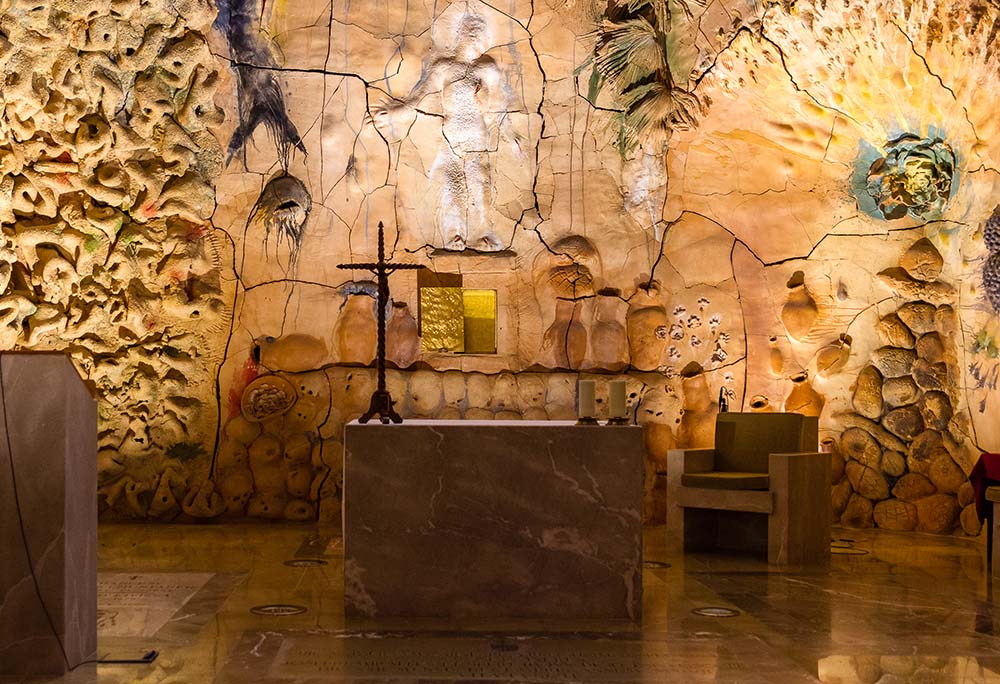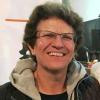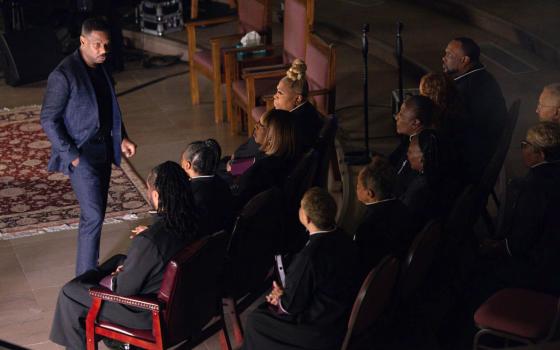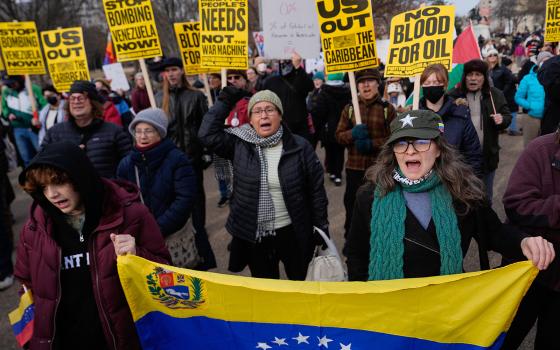
The Chapel of the Blessed Sacrament, created by artist Miquel Barceló, in the Cathedral of Santa Maria de Palma in Palma de Mallorca, Spain (Wikimedia Commons/ Friedrich Haag)
Yes, we can approach Mother Nature. Yes, we can hug the trees. Yes, we can embrace the waves and let the air we breathe permeate us slowly and firmly like God's Spirit: hugging, embracing and permeating our whole microcosm, our whole being. And, yes, we can kiss the earth and the running river, and smile at the tickling on our lips.
Fear what? Oh, no, no room for fear, for there she is, Mother Nature, elegant, cleansed by a long retreat, majestic and accessible, as always.
How much we missed her these past months, when most of us couldn't go out of our flats except for emergencies.
Mother Nature's cry, during these past months, has been like the illness of a gentle mother who has been taken for granted always, except on her birthday, a mother who has been used and exploited to satisfy our needs and desires and wishes.
Perhaps — now that we have missed her so much — we'll treat her in a loving and gentle way. It is not too late. Sometimes when a person who is close to us dies, we regret not having said how much we loved her; now, there is still some time left to rethink our relationship with the planet.
But nature doesn't need words, rather she needs respect and, yes, respect. Like any living being she unfolds and becomes her best self when she is acknowledged and loved. Now is the time! There is still some time left.
Many lovers of nature think that we need to ritualize almost every change, movement, season ... as a way to hold it sacred.
I bow to the sun, every morning, when I go out early for a morning contemplative walk — and there he is, rapidly bringing light out of darkness! There he is, covering everything with color and warmth.
I can either walk fast, paying attention to myself and my breathing… or instead offering my heart's attention to what is before me, given to us freely. And slowly I may allow myself to become part of it all:
... the smell of the trees freshly awakened; the color of the sea, just painted; the people driving fast for work; the people out here wishing good morning to each other ... everything becomes sacred, and different each day.
I find myself taking pictures of the same places, because "today the color is different or this angle offers a better perspective," and I smile, like a mother taking yet another picture of her most beautiful child.
There is a spot nearby, where I can see the moon coming out almost simultaneously with the sun setting. Awesome!
And before going to bed I love to say good night to the stars — just on top of my head if I can just remember to look out and up, instead of only looking in and down.
Those most precious times of the day and the night: We all know they coincide with the Liturgy of the Hours, in a splendid and life-giving way. How can we forget? Nature is a living psalm, always in inclusive language, always speaking to our heart.
Can you imagine having it all together in a cathedral?
You may know of many places where nature comes in the church. My story is from my city's cathedral in Palma de Mallorca, Spain.
Advertisement
Like many other cathedrals in Europe, first it was a mosque and it was deconstructed (13th century) to become a cathedral. Like we do today, we cut down full forests (nature's cathedrals) to make things we want. Religion can become a commodity too, if it's not in touch with reality, with people's spirituality. Today we wouldn't deconstruct that cathedral, would we? I like to believe that today we'd unite in one magnificent building holding the sacredness of the different religions in its walls, in its liturgies.
Palma's cathedral has had different renewals to adapt to today's world, without losing the taste and sense of a cathedral leaning out at the Mediterranean Bay of Palma.
The most recent renewal was done by a painter from my hometown, Miquel Barceló. Barceló is a painter and ceramist; like most of us in Mallorca, he is in love with the Mediterranean and its colors and its fruits. He is able to convey the world outside, into a room, the Chapel of the Blessed Sacrament in the cathedral.
He brings the forests of the seabed as well as the fruits of the earth in a breathtaking combination of spirituality and reality, of beauty and justice.
He also painted the dome in the Hall of Human Rights for the United Nations in Geneva.
When nature becomes part of our sacred spaces, it seems we interiorize it in yet another mystical way. Perhaps we could say that there are other ways of talking and teaching about our faith and about equality and justice beyond the classical stories.
Imagine you take your nephew or your class to visit the cathedral, and you let them tell you what they see in this amazing room ... I think it would touch them profoundly. Perhaps it would be easier to say that someone is ready to give his life because people destroyed all the beauty you can feel, see, touch in a place like this, than say that people killed Jesus because he was too good.
Perhaps a child's creativity would be awakened and nourished by images in our churches that are also in our landscapes, and in our news, and in our U.N. human rights meeting room.
Perhaps we would all grow in awareness and in creativity to enjoy the gifts given to us for a period of time.
In The Dream of the Earth, Thomas Berry said it so well:
In our present context, failure in creativity would be an absolute failure. A present failure at this order of magnitude cannot be remedied later by a larger success. In this context a completely new type of creativity is needed. This creativity must have as its primary concern the survival of the Earth and/IN its functional creativity. Concern for the well-being of the planet is the one concern that, it is hoped, will bring the nations of the world into an international community.
Whether we are at home, in the cathedral or in the house of the nations, the planet permeates our lives reminding us of our most sacred creativity and that of the planet. Let's keep our hearts alert and awaken!
[Maria Magdalena Bennásar (Magda) of the Sisters for Christian Community is from Spain. She has worked in teaching, conducting retreats and workshops, creating community and training lay leaders in Australia, the U.S. and Spain. Currently, she is working on eco-spirituality and searching for a space to create a center or collaborate with others.]






